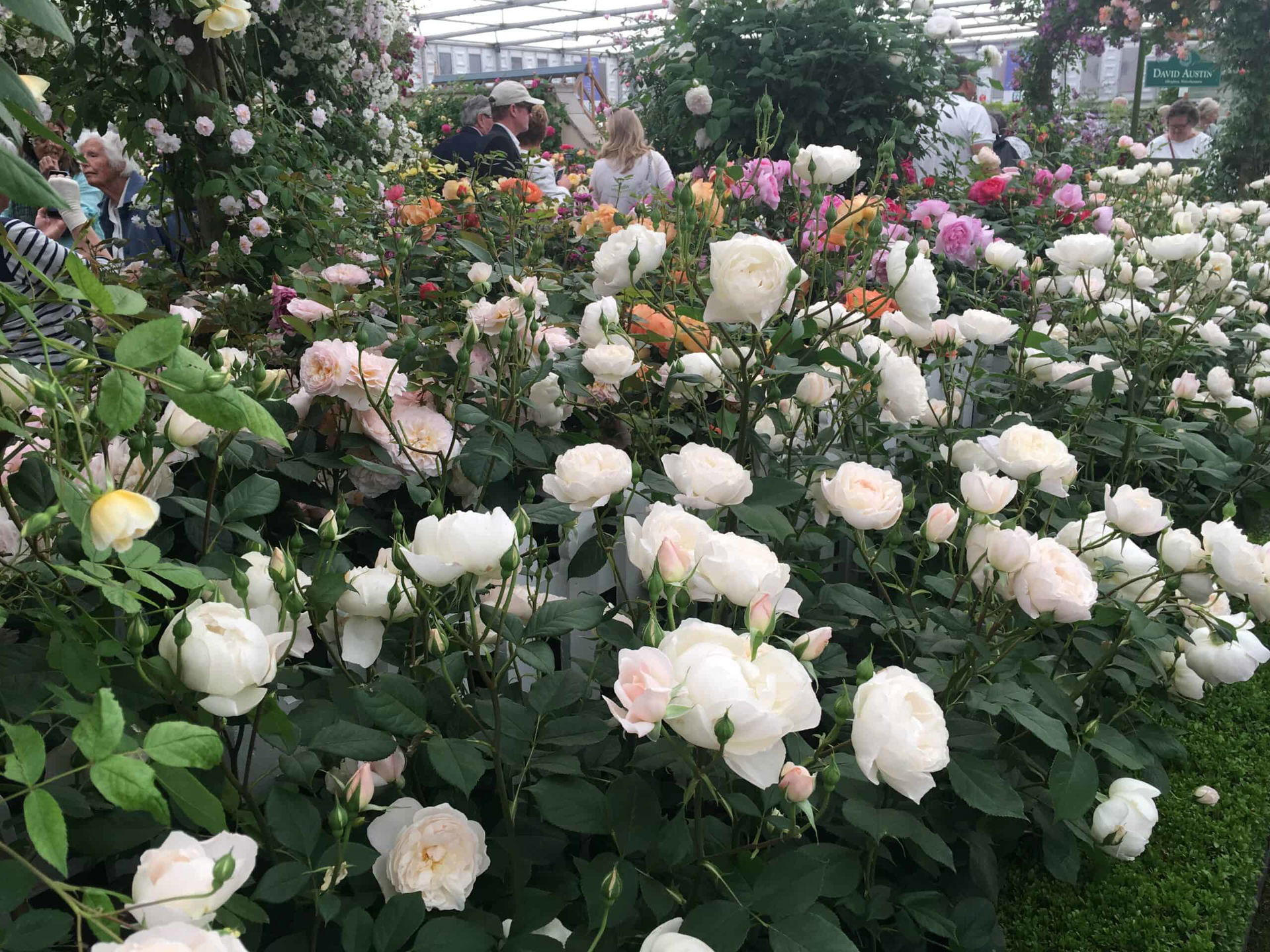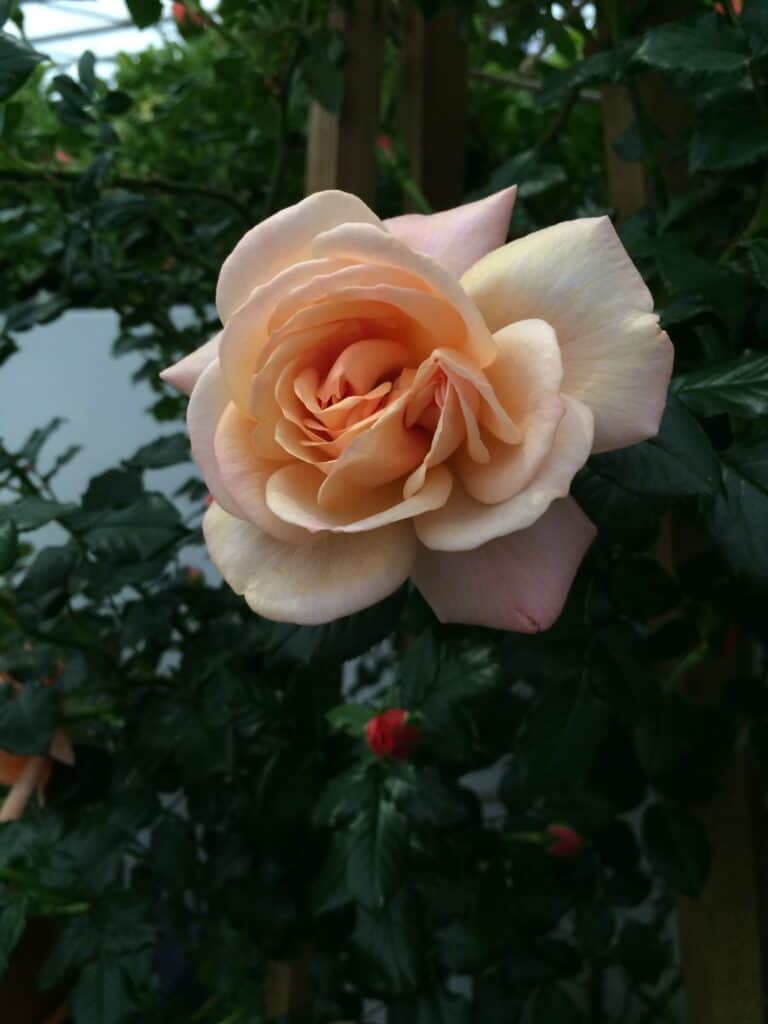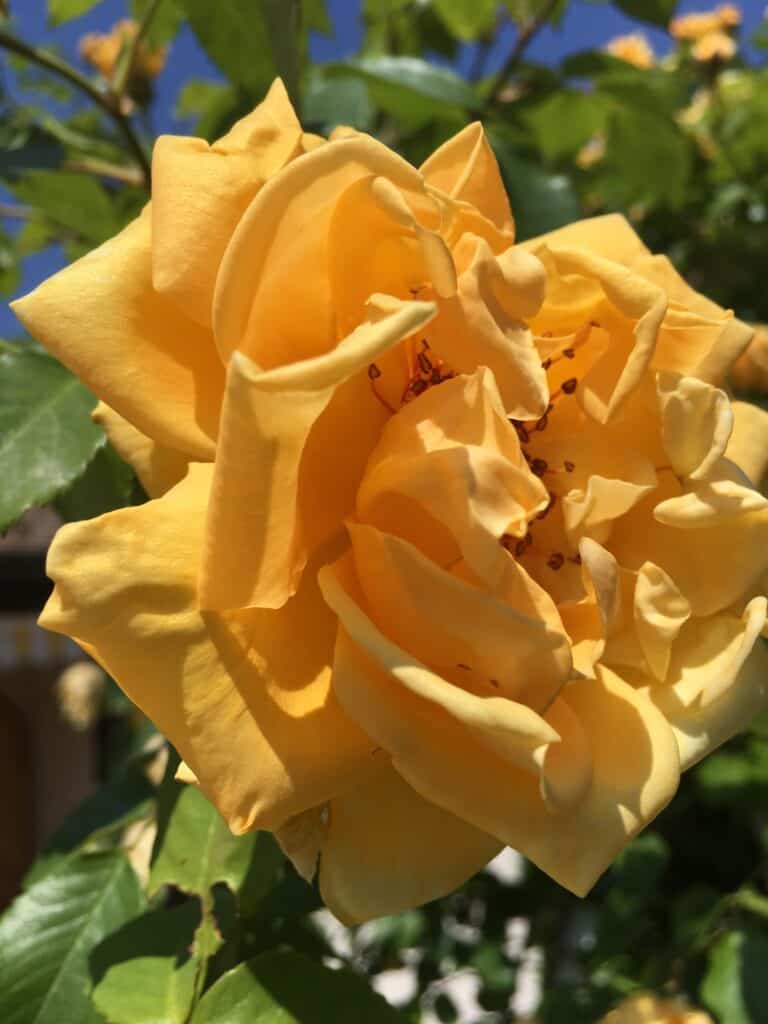Stop and smell the roses

Roses are some of the oldest flowering plants, appearing in the fossil record around 70 million years ago. The original wild roses were not so different to some of our wild roses today, with 5 petals, and some fragrance, and can be found in most regions of the world. The beauty of the flower and the perfume made the rose a very popular plant. The Romans used it as confetti for celebrations, as well as for medicinal purposes and perfume. The Greeks believed that the rose was created by Aphrodite, the Goddess of love, when running to save her lover Adonis, her tears fell on his blood, and thereby created a fragrant red rose. The Ancient Egyptians, too, used roses as a cosmetic ingredient, and they also appear in tombs as funerary wreaths. The cultural and social meaning of roses is very broad, from the red roses that represent love in many cultures, to the white rose representing the Virgin Mary in Christian imagery. Did you know that a bouquet of roses has different meanings depending on the colour of the roses in it? Blue is for mystery, yellow is for friendship and orange is for passion.

Rose flowers
Roses can be found in almost any colour, from the darkest purples, to the purest white. The two colours that are hardest to produce in roses are blue and black. Black flowers, of any type, are quite unusual, and black roses are no exception. You will see roses with the word “black” in their names, like “Black Baccara”, for example, but they are actually very dark red. Blue roses are even harder to find. The Japanese company, Suntory , bred pansy genes into a red rose, and used an enzyme to “switch off” the red colour. The resulting rose is more a purple colour than blue, as the red colour could not be entirely subdued. It’s called “Applause” and you can read about this lengthy project on Suntory’s website www.suntory.com
The earliest breeding of roses has been documented in the Han Dynasty (141-87 BC) in China, where gardeners started to experiment with improving on the wild rose forms, that has just 5 petals. Later, the China rose, or Rosa chinensis appeared in Europe in the middle of the 18th century, and is the parent for many modern garden roses. It is multi-petalled and flowers more than once in the season, a feature known as “repeat flowering.” Rose breeding is a big business today, with hundreds of new cultivars appearing on the market every year.
Rose breeders are looking for plants that have a long flowering period, are fragrant, disease-resistant, with lots of healthy, glossy foliage. The International Rose Trial in Nyon, in the Canton of Vaud in Switzerland, is the first trial worldwide to assess all these things, without spraying or treating the roses in any way. You can see the results so far on the website of the Rose Trial www.rosenouvelledenyon.ch and if the COVID restrictions permit, visit them during the open days in summer.

Rose fragrance
Roses are described as the “cornerstone of perfumery” and are said to feature in 80% of womens’ perfumes. The roses most used in perfumery are Damascene roses, Turkish roses and Rosa centifolia that is principally grown around the French perfume-making town, Grasse. Roses didn’t evolve their fragrance to make perfume, however, they evolved it to attract pollinators like bees. Human rose breeders later on refined and developed those fragrant roses so that today we can smell dozens of different elements in one rose – vanilla, citrus, nasturtium, apples and cloves, for example. You may also smell more unusual fragrances when you take a good sniff – honeysuckle, hyacinths, moss, peppers and even raspberry! Over 300 compounds are known to produce fragrance in roses, and these can vary by time of day, and where the flower is in the development cycle. The compounds are produced by hundreds of volatile molecules, including some called monoterpenes. Rose oxide is a monoterpene, and you find it in in Damask roses, as well as in lychees, and some wines, like Gewurtztraminer.
Fragrance perception is a tricky thing in humans, as it depends on what you’ve been eating and drinking recently, as well as whether you are able to recognise the smell, so it’s no surprise that “noses”, professional people who smell things for a living, are in such high demand for many industries, including rose breeding.
One of the most common complaints about some modern roses is that they don’t smell, and the reason for this was only recently discovered. The analysis of the decoding of the genes for the China Rose “Old Blush” revealed that when some of the genes for flower colour were switched “on”, they switched off the gene for fragrance. This would explain why some roses, with very pretty flower colours, have no smell.
Rose “fruit”
Roses are related to several popular fruit, including apples and pears, and produce fruit in a similar way, developing after the fertilisation of the flower. They are called “hips”, “heps” or “haws” and come in a wide variety of colours and shapes, adding to the attractiveness of the plant, long after the flowers have finished, Inside the fruit, a large number of hairy seeds , called “achenes” develop, and on the outside, a fleshy fruit, called the “pericarp” is produced. The pericarp is the part that is used to make jams or tea, and is very high in Vitamin C, containing 50% more than is found in oranges. The hips are attractive to wildlife, as well as people, and you will see thrushes and blackbirds nibbling the hips in the depths of winter, and finches enjoying the seeds.
Why are roses prickly?
Rose stems have “prickles”, which are outgrowths of the epidermis, mostly as sickle-shaped barbs, that help them to climb. This way the rose can get more sunshine, and is more likely to survive. The prickles also help to deter browsing animals like deer, and are used an adaptation in sandy areas to trap sand at the base of the plant, helping to anchor it.
Cooking with roses
Roses have been used as an ingredient in cookery for millennia, and you can easily learn to make your own rose mixes for sweet and savoury dishes. First of all, find a rose that you like the smell of. It’s important that it has been grown with a no-spray regime, as you are going to eat it. Most pink and yellow roses smell and taste nice, and some white varieties will work too. The best time to pick them is early in the morning, before 10:00, when the dew is still on them. Take the petals off the rose and snip off the white part at the base of each petal. This tastes bitter and needs to be removed. Wash the petals in clean water and lay them out on a tea towel or kitchen paper to dry. If you want fresh petals, you will need to use them that day, but you can keep them for other recipes for up to a week in the fridge, or dry them for use later on.
Easy recipes
Rose tea – put a handful of petals in hot water, let them brew for a few minutes and enjoy
Rose sugar – put a handful of clean dry petals in a jar of sugar in a dark place for a week then sieve out the petals. You can use the sugar in cakes, as decoration or to flavour other desserts
Rose syrup – mix equal volumes of water and sugar in a saucepan, bring to the boil. Take off the heat and drop in a handful of petals and leave to soak for half an hour. Sieve out the petals and decant into a clean jar or bottle. This is delicious in desserts as well as soft and alcoholic drinks.
A rose for every situation
Roses are immensely adaptable plants, managing to survive in deserts as well as the far north, and as a result, are very useful garden plants. There are roses for ground cover, for walls, for pots and tiny miniatures for when you’ve run out of space for any more roses! And if you don’t have any space at home, you can enjoy them in rose gardens and botanical gardens across Switzerland. My book, “Gardens Switzerland” published by Bergli Books, available in all good bookshops, has lots of suggestions.
Author Bio
Hester Macdonald is a garden designer, writer, journalist and consultant. Her book “Gardens Switzerland” is printed by Bergli Books and is available in all good bookshops.
